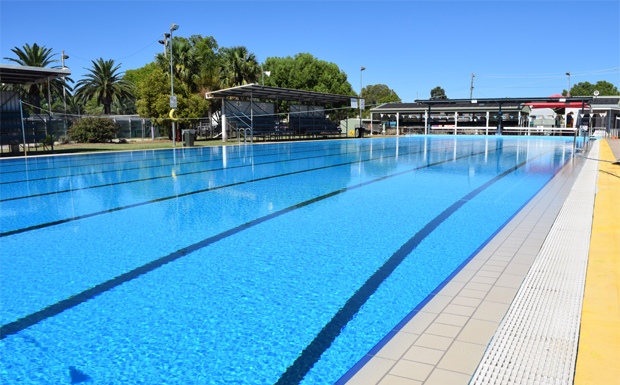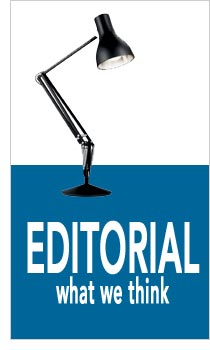
 April 23, 2021
April 23, 2021
by Dafyd Martindale
The expansion of the Kingaroy Transformation Project’s budget from $11.1 to $13.9 million last November caused deep concern among some South Burnett ratepayers.
So much concern that some lodged formal complaints with the State Government and others lodged a petition with Council opposing the project.
More recently, Mayor Brett Otto’s announcement the South Burnett Regional Council will run a deficit of $4.65 million this financial year caused even more angst.
So if you were one of the many people concerned about one (or both) of these issues, then hold on to your horses because it’s about to get worse.
Right now, most ratepayers probably don’t know that Kingaroy’s public swimming pool is on its last legs.
The pool was built in 1953 and has faithfully served several generations of residents.
But after 56 years – and many millions spent in maintenance and running costs – it has reached its limits and will soon need to be ripped out and completely replaced.
Now, that probably doesn’t sound so bad until you find out that the price tag attached to this exercise is expected to be above $10 million.
Yes, you read that correctly. Above $10 million.
Or to put this into perspective, building a new Kingaroy Swimming Pool is likely to cost almost as much as the entire Kingaroy Transformation Project.
In light of this, our Council’s recent decision to call in a consultant to suggest strategies to get its budget back into balance is hardly surprising.
But what would be genuinely surprising would be for our Councillors to tackle the madness of an overblown swimming pool network inherited from the 2008 amalgamation.
Right now, the South Burnett operates six public swimming pools in Blackbutt, Nanango, Kingaroy, Wondai, Murgon and Proston.
The Blackbutt and Proston pools are owned by the Education Department and our Council pays for pool managers to operate them in season.
The other four are fully owned by Council, so it not only pays for pool managers but also maintenance and running costs, too.
Now here’s another sobering (and also little-known) fact:
Not one of these pools – either fully owned or Education Department owned – has ever shown a cent of profit.
Instead they have been run at big losses, year after year.
How much of a loss?
Well, back in mid-2013 former South Burnett Mayor Wayne Kratzmann disclosed the pool network was losing upwards of $680,000 per year – a figure likely to be much higher now.
And this does not include the many millions spent on our region’s pools over the years for endless rounds of maintenance and upgrades.
Now, if our pools were used by most residents – or even just a hefty block of residents – there are people who would say this was a justifiable service, and I’d probably agree with them.
But with six pools to serve a population of barely 32,632 our Council is currently providing one pool for every 5438 residents.
Recently I decided to investigate what bigger Councils do with their own pool problems.
To do this I took to Google to find out what populations each council serves and how many public pools they provide, then divided the resident population by the number of pools (you can do this exercise too – it’s not hard).
What I found was that big, financially well-resourced councils such as Brisbane and Ipswich provide one pool for every 51,000-52,000 residents.
Smaller councils such as Moreton, the Fraser Coast, the Sunshine Coast and Toowoomba provide one pool for every 21,000-36,000 residents.
But it seems that only very small councils provide a pool for every 5400-odd residents as we do.
Given what bigger, better-resourced Councils now do it seems to me that one quick answer to Council’s looming budget problems would be to trim our pools back.
Cutting the number of pools from six to four (for example) would leave us providing one pool for every 8158 residents – a ratio still six times better than Brisbane and almost three times better than Toowoomba.
But it would slash the amount of money our Council loses on pools each year by up to 33 per cent.
It would also remove many millions from the Council’s asset register that have to be depreciated each year (probably saving a further several hundred thousand per annum, if the replacement cost of Kingaroy’s pool is any guide).
And if one of the pools we closed was Kingaroy’s, it would also save us spending $10-plus million to launch another 56 years of eye-watering losses.
Now, you may be wondering why an idea this simple and (I think) obvious hasn’t been taken up by any of our Councillors in the past 13 years?
The answer seems to be courage – or more precisely, the lack of it.
I’m sure we can all understand no Councillor wants to tell their ratepayers a facility residents have used for decades is going to disappear because it’s become unaffordable.
That’s probably why Cr Roz Frohloff said at a recent Council meeting she wondered if any of her fellow Councillors “had the balls” to take the tough decisions that will be called for in order to get Council’s books back in order.
I wonder about that, too … but I guess we’ll all find out.
[UPDATED with correction]
























Great article. Thanks.
If the Kingaroy pool was closed and no new pool scheduled to be built, the outcry from the people who do use the pool on a regular basis would be deafening.
If the pool was closed, school students could travel to Nanango pool for learn-to-swim classes, thus making yet better use of that facility.
Also, perhaps the council could lobby the Queensland government to provide a grant to build a new pool.
Many years ago I lived in a suburb that had no pool. A community fundraising campaign was undertaken, with raffles and support from local business. It took a few years, but the end result was an Olympic size pool, a junior pool, a toddler wading pool and eventually an Olympic standard diving facility. Further, BBQ and picnic tables etc., were also built. The council donated the land from a already established park and approved the whole facility without the usual fees that would have applied.
It was a working-class suburb, but the people really got behind the project. This was true community spirit in action. I doubt that such enthusiasm would be shown by Kingaroy residents.
I agree, Bouncer. When I was a child growing up in Sydney the nearest public pool was three suburbs away and I had to catch a train through several stops every summer vacation whenever I wanted a swim. During term, our school also bussed us to the pool and back for sports days and swimming carnivals. But I thought this was all pretty normal because very few suburbs in Sydney had a Council pool then (the same still applies today).
But here in this area – where pretty much everyone has a car because there’s no public transport – the equivalent would be Kingaroy people driving to Nanango or Wondai. This is hardly a big ask and equivalent to what I used to do as a youngster.
So if someone screams about their pool being closed, the question I’d ask them is why should all ratepayers pay for a facility used by a very small percentage of residents when there are local alternatives easily available to them? Or would they still be so keen on splashing around in a town pool if admission charges were raised to what they really should be to cover the costs? (eg: $50 a visit).